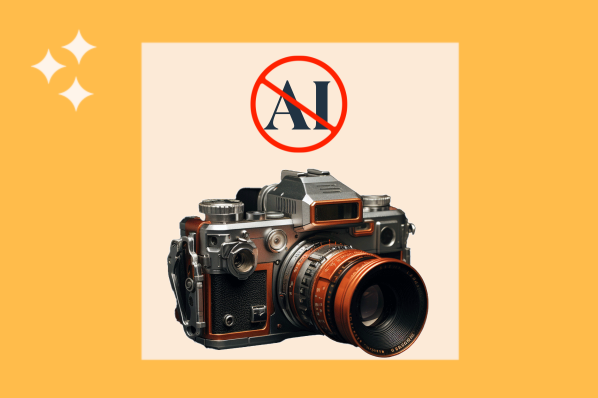That’s why I’ve been working on this guide — to help you make decisions about how you’ll approach your next marketing campaign. I also have more than 20 years of marketing experience, so I’ll share my insights along the way. Keep reading to get started, or use the links below to jump ahead.
Table of Contents
What is a marketing campaign?
Marketing campaigns are organized, strategy efforts to promote a specific company goal. That can include raising awareness of a new product or capturing customer feedback. They typically involve a combination of media, including email, print advertising, television or radio advertising, pay-per-click, and social media.
Marketing Campaigns vs. Advertising Campaigns
Marketing is how a company raises awareness of its brand and convinces customers to make a purchase. Alternatively, advertising is the process of creating persuasive messages around these broad goals.
In terms of campaigns, an advertising campaign might be one facet of a larger marketing campaign strategy.
Let’s say Nike launched a campaign surrounding the release of a new product. Its advertising efforts only reflect one aspect of its marketing strategy. I’d also expect to see the brand use email newsletters, social media, and paid search to meet its goal.
Now that we understand the difference between advertising and marketing campaigns, here are a few more types of marketing campaigns you might run.
Using AI for Marketing Campaigns
No conversation about any type of marketing campaign today would be complete without talking about how to use AI effectively and ethically. Since AI came out, just about every tool I’ve demoed, tested, or reviewed has taken steps to integrate it … somehow. With that in mind, it’s important to see AI as your colleague (or assistant) to help you plan your efforts.
However, like any other tool, AI needs some guardrails. I caution you to make sure you understand all the elements of whatever type of marketing campaign you’re launching. What I’ve found after testing and playing with different AI tools is that if you don’t know what a good output — in this case, a marketing campaign — looks like, you won’t know how to evaluate whatever you use AI to create or ideate.
Candidly, that’s where this guide comes in. By taking the time to understand the different types of best marketing campaigns, components, strategies, and examples I’ve shared, you’ll be able to work more effectively with whatever AI program you choose.
Whether you’re using generative AI to help you identify any angles you might have missed, create content, or solve technical issues, AI cannot replace your brain, your unique lived experience, or your gut intuition. However, it can help you speed up the process to get your campaign up and running, get creative off the ground, and analyze the data so you can test your idea and adjust accordingly.
Types of Marketing Campaigns
- Product Marketing Campaign
- Brand Development Campaign
- Email Marketing Campaign
- Content Marketing Campaign
- User-Generated Content Campaign
- Public Relations/Awareness Campaign
- Direct Mail Campaign
- Affiliate Marketing Campaign
- Social Media Campaign
- Acquisition Marketing Campaign
- Paid Marketing/Advertising Campaign
- SEO Marketing Campaign
- Video Marketing Campaign
Marketers have a wealth of choices when deciding what kind of marketing campaign to build. So, how do you make the right choice?
Before I take this discussion any further, I want to give you a short definition of each so you understand what they are and how they work.
Looking for a place to manage all your campaigns, no matter the type? Marketing Hub lets you work more efficiently with the help of AI. Personalize messaging, automate campaigns, and gain actionable insights. Start for free today.
1. Product Marketing Campaign
Product marketing or product launch campaigns are centered around building as much buzz as possible — usually related to a new release. Product launch campaigns are one of my favorite types of marketing campaigns. They come at an exciting time in a company when there’s a ton of collective energy related to a new release. In addition to having some really fantastic angles, it’s the perfect time to create buzz and draw people in.
Campaigns are usually omni-channel and rely on collaborative efforts, which means
lots of moving parts. Depending on the size of your organization, you’ll need a central team or person to manage critical checklist items for the launch.
Example of Product Marketing Campaigns
Apple typically does a great job of this with its annual product launches.

However, in my experience, unless you have devoted superfans, most people aren’t waiting with their wallets out, ready to buy your next new product.
So you need this type of campaign to hype up your audience.
Best For
Creating awareness, excitement, and demand for new products so people are ready to purchase as soon as they become available.
2. Brand Development Campaign
Brand campaigns are simply about building awareness about your company and what sets you apart from your competitors.
These are often eye-catching ads that set out to create an emotional reaction of some kind — humor, frustration, and nostalgia are common — to stick in people’s minds.
Example of Brand Development Campaigns
Coca-Cola has incredible branding campaigns that are usually targeted at creating unity around a shared interest that bridges all kinds of differences. The common thread? Drinking a Coke.
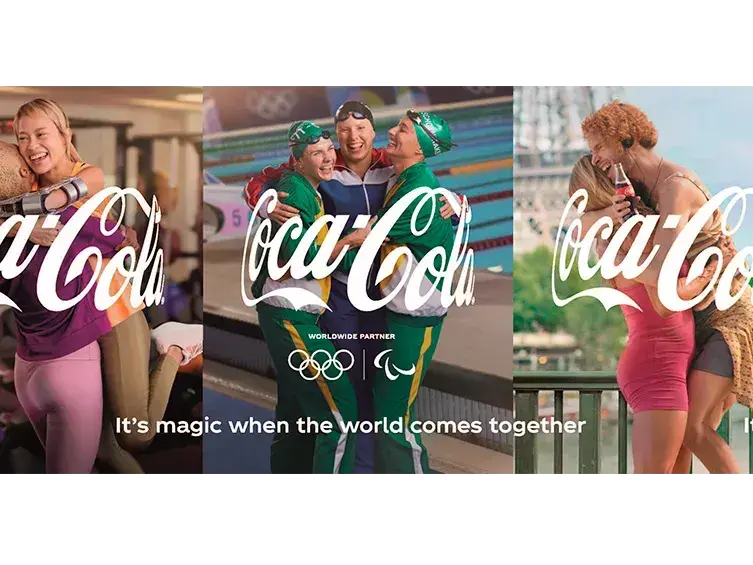
I’ve seen many great Coca-Cola campaigns over the years, but some of my favorites come during the holidays or during the Olympics, which are natural times of gathering.
Best For
Increasing brand awareness and creating memorable emotional connections with people. This isn’t usually a type of marketing campaign for driving sales.
3. Email Marketing Campaign
Email marketing is one of the most effective types of marketing campaigns because you own the list and don’t have to rely on algorithm changes, and it’s one of my favorites.
Email is a relatively low-cost investment in terms of money and time and offers an effective opportunity to get in front of your audience.
Example of Email Marketing Campaigns
My favorite example of email marketing campaigns is BarkBox. While their campaigns won’t be the right fit for every brand, they’re absolutely delightful to find in my inbox.
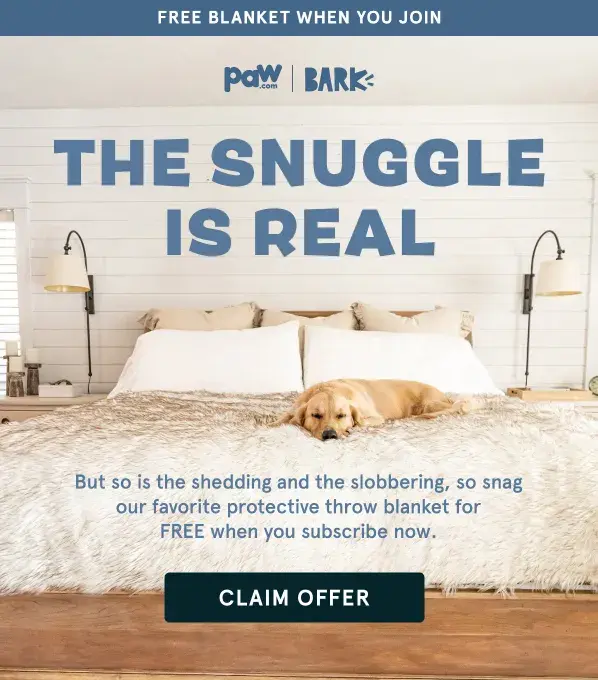
That said, depending on your business and deliverability needs, you might find that text-based emails work better for you. The key lies in having a strong strategy.
Best For
Nurturing a connection with your audience, which will ultimately drive sales.
4. Content Marketing Campaign
In a nutshell, content marketing is focused on serving relevant and useful content to your audience, often solving problems and showing how your services can help.
This type of marketing campaign can take place on a variety of platforms. While goals come first with any good content marketing campaign, I typically use the written word as the foundation of my content strategies.
Then, I repurpose the copy across design, audio, and video into different social media platforms and formats.
Example of Content Marketing Campaigns
HubSpot is pretty much the holy grail of content marketing — and yes, I’m writing this article for HubSpot, but it’s the absolute truth. HubSpot basically coined the term “inbound marketing,” which is largely content-driven.

Their Marketing Hub and Breeze Copilot AI tool make it easy to create effective content that connects with your audience and drives leads.
Best For
I talk about content marketing as the long game because it can take a while for Google to index content and drive traffic. However, it’s one of the best ways to establish authority and maximize your SEO game.
5. User-Generated Content (UGC) Campaign
UGC campaigns are fantastic because the onus isn’t on you to create content; it’s on your audience.
When your audience creates content, their friends are more likely to take notice.
Well done UGC starts trends that go viral. Remember the Ice Bucket Challenge, which started as an ALS campaign?
Example of UGC Marketing Campaigns
The ALS Ice Bucket Challenge went viral — as a way to build awareness for ALS. Hundreds of people participated, partly for fun, in the popular trend.

On the other hand, other UGC marketing campaigns might involve creating a user forum for products where people can answer each other’s questions. It’s a great source of voice of customer research, and more importantly, can give your company an idea of common problems that you may need to address through knowledge base content, tutorials, or other product service content.
Best For
Viral trends like the ice bucket challenge are great for growing your community. The other types are fantastic for creating a knowledge base or getting people engaged with your product.
6. Public Relations/Awareness Campaign
This type of marketing campaign focuses on spreading the word about something that’s going on, often an upcoming event or the debut of a new product.
While public awareness campaigns don’t often go viral, the idea behind them is catching attention and getting people to share the information organically — and sometimes by capturing the attention of journalists and news organizations.
Example of PR Awareness Campaigns
Lego’s Play is Your Superpower campaign is one of my favorite PR and awareness campaigns in recent years. With a goal of bringing awareness to the role that play … err … plays in brain development and encouraging families to encompass more playtime in their lives, Lego’s campaign is filled with bright colors, powerful statistics, and a compelling narrative.
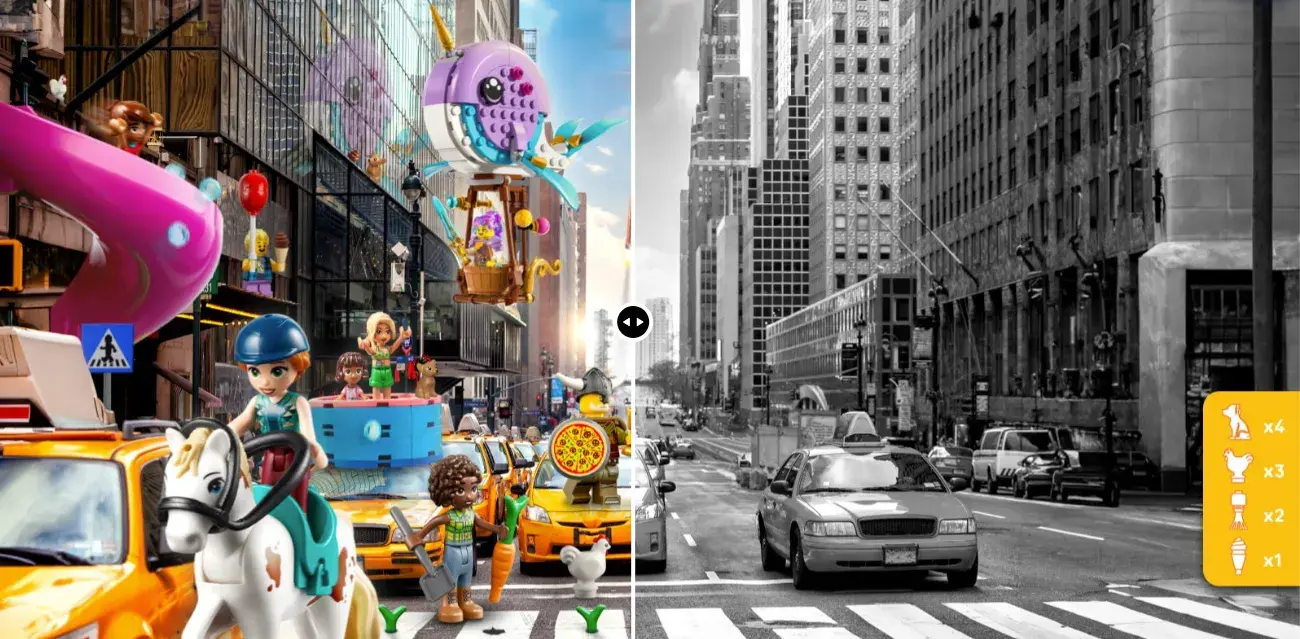
Best For
Gaining attention and awareness for your brand by connecting with emotions and journalists.
7. Direct Mail Campaign
I adore direct mail because this type of marketing campaign has a much higher reach percentage than just about any other platform.
Why? People like getting mail — and if it makes it to our mailboxes, at a minimum, we’re going to touch it and look through it. When it’s well done, people hang onto your direct mail promotions — what’s more, they spend 45% longer engaging with your direct mail than other types of marketing campaigns.
The only drawback is that it can be more costly, but in my opinion, it just means you need to be more strategic about your direct mail efforts.
Example of Direct Mail Campaigns
If you’re reading this in an election year, you already know how powerful direct mail can be. Candidates and PACs are always using postcards to build awareness. However, that’s not my favorite type of mailer.
My favorite type encourages people to hang onto the mailing, whether it comes in an envelope or as a flat postcard. Some examples might be:
- Coupons
- Calendars
- Magnets
- Pens
While you can go fancy, like in the example I’m sharing below, it can also be a simple letter and magnet with their contact info — like my septic company sent out shortly after we moved into our home in the country.
However, the best example in my book is Tommy Bahama. Their mailings often come in an envelope with a gift card attached. The savings are almost always worth hanging onto, also.

I’ve also seen successful direct mail campaigns from service companies with a simple message along the lines of “We just painted a house on your street. Can we give you a quote, too?”
Best For
Developing brand awareness, driving traffic to a store — whether brick and mortar or online, and encouraging people to take action — for example, calling for a quote.
8. Affiliate Marketing Campaign
Affiliate marketing campaigns, also known as influencer campaigns or referral campaigns, are immensely popular ways to connect with new audiences.
People love to buy what other people love, so these types of campaigns provide more awareness, more sales, and commissions to the influencers who are selling your products. These can be ongoing offers or specific promotions.
Example of Product Marketing Campaigns
There are so many great examples of affiliate marketing campaigns. For example, there are several influencers only who promote the Fab Fit Fun box — I see their posts spin up a few times a year.
Clothing and gear brands also often have ambassador programs, which provide a discount to individuals to share with their followers — and deals on their own purchases — in exchange for posting content with photos and videos of their products. One of my clients is building an Ambassador Program to get user-generated content for marketing and use the power of influence.
However, one of the most popular examples is Amazon Associates, which creators can use to gain commissions from product sales.
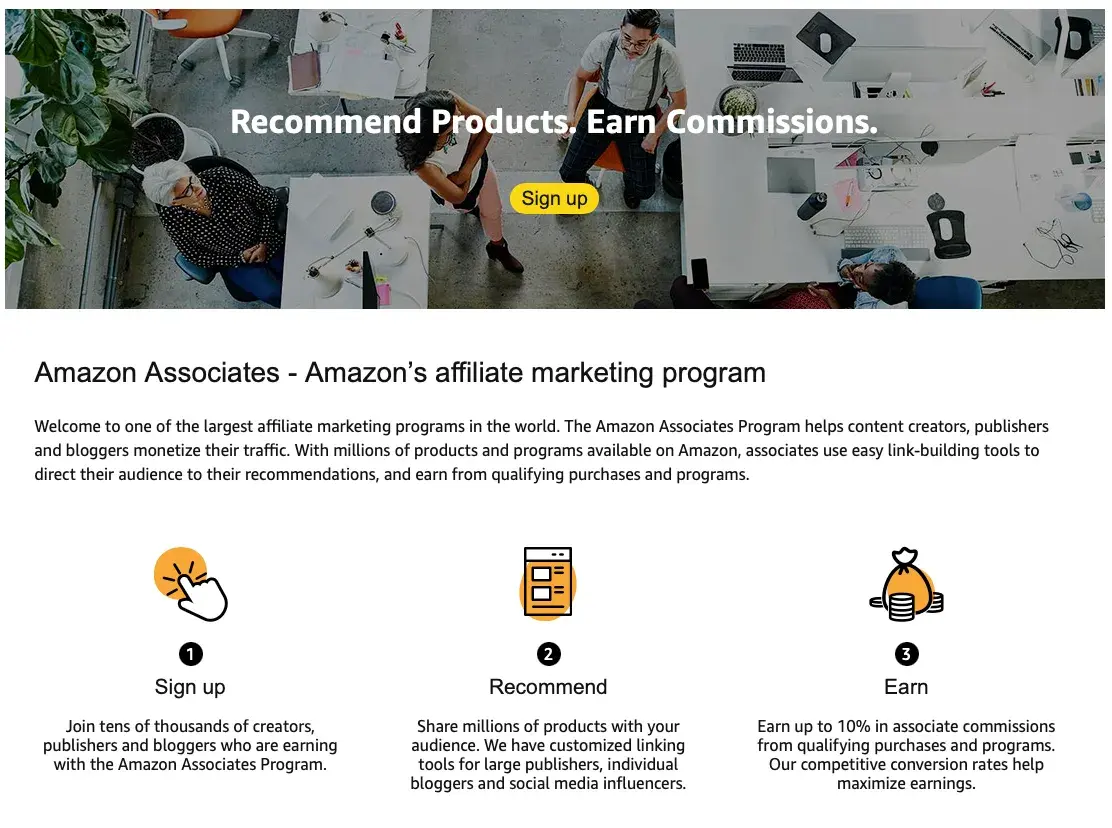
Best For
Growing your reach and harnessing the power of referrals and recommendations, while getting great content to repurpose in your own marketing.
9. Social Media Campaign
Social media marketing campaigns are simply about reaching your audience on the social media platform where they hang out.
I’ve used these types of campaigns to build brand awareness, nurture relationships, and even do some selling.
Example of Social Media Marketing Campaigns
Everywhere you turn, there are great examples of social media marketing campaigns, which makes it hard to choose. However, I love the Dove Self-Esteem Project, especially their recent Face of 10 campaign, which focuses on helping protect kids — young girls especially — from “anti-aging skincare content that can negatively impact their self-esteem.”
As a parent myself, this resonates with me as I try to protect my kids from social pressures… and this example goes to show how social media can be used for good as well as business growth.
Best For
Organic social media is all about getting as much unpaid engagement as you can. Paid social media campaigns are designed to widen your audience or deepen your reach and might include retargeting people who visited your site.
10. Acquisition Marketing Campaign
Acquisition marketing is a type of marketing campaign focused on growing by finding new customers, while working to keep existing customers engaged and happy. These campaigns focus on attracting, nurturing, and converting leads and may lean on a variety of other types of marketing campaigns I’ve explored here.
Example of Acquisition Marketing Campaigns
Referral programs are great examples of this. I’ve seen this everywhere, from my kids’ summer camp to software I use — where current users benefit from sharing, sometimes monetarily, and sometimes with additional benefits in the program itself.
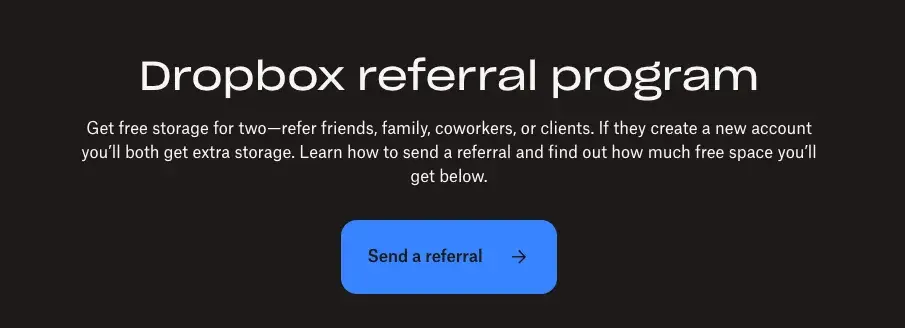
Dropbox’s Referral program awards additional space for every person a user refers.
Best For
Keeping current customers happy while offering incentives to new customers. I particularly like this model because, so often, it feels like new customers get the best deal and existing users aren’t rewarded for staying — I see this often with cell phone and internet providers.
11. Paid Marketing/Advertising Campaign
Paid marketing or advertising campaigns decrease reliance on organic reach and focus on helping improve your position with paid efforts.
In a recent client project, we determined that we needed a blend of Google, YouTube, and Facebook ads, supported by organic content, to continue building the momentum we captured with her new launch.
That meant we needed a variety of different types of assets — landing pages, videos, blogs, social posts, and email sequences, among other types of marketing assets — to support our paid campaigns.
Example of Paid Marketing Campaigns
As with social media campaigns, there is no shortage of great paid marketing and advertising campaigns. The best ones provide an incentive for the audience to take action now and get answers to their questions.
If you’re doing a “request a quote” or “request a guide” type of campaign, you’re likely to get more clickthroughs in-app, whether by pushing your audience to join a chatbot message or filling out a form.
On the other hand, great ads offer an incentive to shop now — such as this one for Anabei sofas, which you can purchase for “up to 60% off” and according to this ad, “the entire sofa can go into the wash.” For a family with kids, dogs, and cats like mine, it’s quite the value prop!

Best For
Getting leads that you can convert through a nurture sequence or on your website.
12. SEO Marketing Campaign
While search engine optimization campaigns are less sexy to talk about than some of the other topics, simply put — they work. By analyzing what people want to know (search intent) and the words they use to search (keywords), you can create SEO strategies that drive traffic to your site.
Because the algorithm is continually changing, I always tell people that the most important part of writing SEO content starts with creating good, helpful content first that people want to read. In my book, that means that I write first for the humans who will be reading the content, while optimizing it for SEO to make it accessible to search engines.
While technical SEO on the back end of your website is critical, when I talk about SEO campaigns, it’s not usually what I’m referring to.
Instead, SEO campaigns usually refer to optimizing individual pages and content with specific keywords, including the content itself as well as the titles and metadata.
Example of SEO Marketing Campaigns
SEO is such an integral part of content marketing, so again, HubSpot gets a gold star for being great at SEO content with its Marketing Hub and Breeze Copilot AI tool.
Looking for more great examples? It’s as easy as doing a Google search for anything and seeing which topics pop up first.

Best For
SEO, like lots of content marketing efforts, is usually a long game. It’s best for building authority and driving traffic.
13. Video Marketing Campaign
Video campaigns will continue to be important elements of every marketing strategy. YouTube, TikTok, and Meta platforms have billions of views each month, which means that if you’re not using video, you should be.
While video should be part of most other types of marketing campaigns on this list, they also serve as a standout process. And, what I love most about video campaigns is there’s a huge range from polished and highly-produced to grittier, low-production videos, meaning that there are opportunities to show up on video, whatever your budget. Moreover, you can do short-form content or longer videos based on the audience you want to appeal to.
For example, I love live video because it offers authentic insights into a brand or person. And, from a personal standpoint, I love that I can’t get stuck in editing and re-editing — it’s live, and you just keep going.
Example of Video Marketing Campaigns
There are approximately one gazillion examples of great video marketing ads that run the gamut from ads to live broadcasts and everything in between. Since it’s so difficult to find an example, I’m sharing a few of my favorites:
First up, Dollar Shave Club — because they launched their entire business with a video, which was just to prove the concept and demand for their products before they really had a business infrastructure.
The second is Old Spice. Roughly 15 years ago, they had a campaign called “The Man Your Man Could Smell Like” to breathe new life into the brand. The first video in that series is here:
I loved that ad and still find it hilarious. Recently, they’ve brought back the concept with the “Smell like your own man, man” campaign featuring videos like this:
Obviously, those are some of the more highly produced videos, but you only have to go to TikTok or Instagram to find more great video campaigns that are shorter-form. Or, perhaps you can join your favorite business coach’s livestream workshop, which is another type of video marketing campaign.
Best For
Building familiarity with the product and creating demand. I particularly like video for small businesses because it helps people build a relationship and identify with the business.
The Anatomy of a Successful Marketing Campaign
In our 2025 Marketing Strategy and Trends Report, we found that data-informed marketing strategies have become the most popular type of marketing campaign.
Brands also emphasize agile marketing and the ability to pivot in the types of campaigns they run.
Successful marketing campaigns continue to focus on social media marketing and brand-building. Companies have focused on online communities to drive more engagement.
Regardless of the type of campaign, the most popular marketing asset is video.
This is followed by images, blog articles, infographics, podcasts, and other audio content. Video continuously has the highest ROI of any media format — a trend that remains strong in 2025.
Marketers are continuing to invest more in video elements of marketing campaigns.
Beyond video, the most successful campaigns today include a blend of digital strategies to ensure that you maximize your efforts.
Marketing Campaign Components
Multiple components go into the planning, execution, and results of a stellar marketing campaign. We'll discuss the most important components of campaigns below.
Goals and Key Progress Indicators (KPIs)
This component defines the end goal of your campaign. You‘ll develop specific, measurable goals. Then, you’ll state which metrics will be used to track progress.
For example, your content creation campaign might be measured by organic traffic. Each post may aim to drive 1,000 views per month and 10 new contacts. These categories will be measured in Google Analytics and Looker.
Channel
Where will your content and messaging be distributed?
Let's say you’re running a social media marketing campaign. You might prioritize growing the channels most relevant to your audience. You can also omit those where you’re least likely to grow a loyal following.
Budget
Not all marketing campaigns require an incremental budget, but many still do. Factor in the agency, advertising, and freelance costs. Then, factor these numbers into any ROI analysis for your campaign.
Content Formats
Determine what kind of content you will be creating to fuel the campaign. It’s common for marketers to include multiple content formats in a singular campaign.
For example, a branding campaign could include video ads, press releases, and guest blogs.
Team
Who are the individuals you’re relying on to get the job done? Before kickstarting your campaign, designate people to work on every aspect of the campaign. You should know who handles copywriting, design, media buying, and reporting.
Creative Assets
A great marketing campaign should have great creative assets to match. Whether it’s a sleek website design or an interactive infographic, make sure your design is professional. All your assets should fit the purpose of the campaign.
Top Marketing Campaign Strategies [Data]
According to our 2025 State of Marketing report, there are several types of marketing campaigns and strategies that every business needs to stand out. Here are five of the top strategies marketers cite as their priority in 2025:
- Flexible strategies that allow rapid pivoting if needed.
- Customer retention to keep current customers happy.
- Data-informed marketing strategies drawing on powerful marketing analytics software.
- AI-driven marketing strategies, which help everyone remain competitive.
- Short-form video, which has the highest ROI.
As a numbers nerd, I want to share more about the statistics behind these strategies to help you understand why each is so vital this year (and beyond).
Flexible Marketing Strategies
Flexibility may sound like a strange strategy, but it’s vital for agile marketing. Based on everything I’ve seen in the last several years, flexibility can make the difference between success and failure. Here’s what our report found:
- Marketers rank planning ahead as the biggest way marketing has changed in recent years.
- 80% agree that they are able to pivot in the case of major events like recessions, a pandemic, or political turmoil.
- Marketers cite rapid change in people’s lives in recent years as the biggest challenge to understanding the target audience.
Customer Retention Strategies
It costs more to get new customers than to keep current customers (and, potentially, upsell them). More marketers today are leaning into that, working to find new ways to reduce customer churn. Here’s what our report found:
- The majority of marketers surveyed agree that focusing on existing customers takes priority over finding new ones.
- 90% of marketers plan to invest the same amount or more in improving customer service through multiple channels, including social media DMs.
- 94% believe that personalized experiences increase the likelihood that people will become repeat customers.
Data-Informed Marketing Strategies
As marketing departments everywhere feel the pinch, it’s more important than ever to lean into data, and most marketers agree. I’m seeing this with my clients, too — they’re willing to invest money but need to see the ROI. Here’s what survey respondents have to say about how it supports their marketing:
- 82% say they can turn their data into meaningful insights.
- 73% agree they have the data they need to reach their target audience effectively.
- 77% say they have high-quality data on their target audience that makes it easier to understand them.
AI-Driven Marketing Strategies
This should come as no surprise. However it’s interesting to see how AI stacks up with trends, budgets, and strategies.
- 66% of marketers already use AI and marketing automation in their role.
- 89% plan to invest the same amount or more into implementing AI marketing strategies this year.
- 90% plan to grow or maintain their investment in SEO to prepare for generative AI in search.
- Marketers say that AI and automation is the top new trend they’ll use for the first time this year.
- 83% agree that AI and Automation tools help them spend more time on the most important part of their job, and 76% say it’s the part of their job they enjoy most.
Short-Form Video Marketing Strategies
Short-form video isn’t going anywhere. It’s one of the best ways to find new customers and build relationships with them — with relatively little investment of time or energy on your customers’ part. And while it’s the only specific tactic or type of marketing campaign in this list, it goes to show how important it is to marketers around the world:
- Short-form video content is the #1 trend marketers plan to invest the most in during the year.
- 93% of marketers plan to maintain or grow their investment in short-form video content.
- Marketers cite short-form video as the marketing trend with the biggest ROI in the last year.
How to Create a Successful Marketing Campaign
Now, you might be wondering, “How do I get started from here?”
Well, now is the time to plan your campaign. In fact, the planning process is my favorite part. I always start by identifying key goals so I can start mapping out the strategies and tactics that will help me (and my clients) get there.
Next up is a campaign plan with a course of action that lays out the types of marketing campaigns and the marketing software that we’ll use to build and measure our efforts. And, as a reminder, this should detail required resources, assets, stakeholders, and measurable goals so we have a roadmap for tracking success.
Let’s dive into what that process will look like in detail in the section below. If you're more of a visual learner, this video can help.
1. Understand the elements of your plan.
Before you get started, it’s important to understand that creating a successful marketing campaign requires considerably more effort and strategy than simply creating the marketing assets and making a post. No matter what type of marketing campaign you’re undertaking, I want you to take a moment to realize that you’ll need to spend time:
- Planning your marketing campaign.
- Creating and distributing your assets via the public-facing part of your campaign.
- Converting your new leads into customers, whether through a nurture sequence, on-site, or something else.
- Assessing your marketing campaign success and using that data to inform future efforts.
I’ll walk you through each step of the way below, but before going any further, I simply want you to acknowledge everything that goes into a successful campaign strategy.
2. Set a purpose and goal for your campaign.

I always like to start simple when it comes to planning every type of marketing campaign. Why are you running this campaign? What would you like your campaign to accomplish for your business?
If you’re having trouble defining your campaign purpose, start broad. I always recommend reviewing a set of goals like those below so you can identify which is most closely aligned with your own:
- Promote a new product or service.
- Increase brand awareness.
- Gather customer feedback or content.
- Drive leads.
- Generate revenue.
- Boost user engagement.
- Advertise an upcoming event.
This is hardly a definitive list, but it gives you an idea of general business goals a campaign could help reach.
Got your key goals?
Now, let’s take this broad campaign purpose and turn it into a S.M.A.R.T. goal. We'll use the third option as an example: Gather customer feedback or content.
“The goal of my marketing campaign is to gather user-generated content from 100 customers via a branded hashtag on Instagram featuring our new product line by December 31.”
The goal is specific (user-generated content), measurable (100 customers), attainable (via a branded Instagram hashtag), relevant (featuring the new product line), and timely (by December 31).
See how this broad campaign purpose instantly transforms into an actionable, attainable goal?
Pro tip: Setting SMART Goals is simple when you have the right tools. Check out the free SMART Goal-Setting template below to get started on this critical piece of your marketing campaign.
Featured Resource: Free SMART Goal-Setting Template
3. Establish how you’ll measure your campaign.
This will look different for everyone, depending on the channels you're leveraging and your end goal. You might measure email open rates, new Facebook likes, or product pre-orders. You can also track a combination of several helpful metrics.
These answers will depend on your overarching campaign goal. Here are a few examples of metrics based on the campaign goals mentioned above.
- For promoting a new product or service: Pre-orders, sales, and upsells.
- For increasing brand awareness: Sentiment, social mentions, and press mentions.
- For gathering customer feedback or content: Social mentions and engagement.
- For generating revenue: Leads, sales, and upsells.
- For boosting user engagement: Blog shares, social shares, and email interactions.
- For advertising an upcoming event: Ticket sales, vendor or entertainment bookings, and social mentions.
If your campaign involves multiple marketing channels, it’s wise to define how you’ll measure your campaign on each medium.

For example, say I was running my user-generated content (UGC) campaign on social media, email, and our blog. First, I’d define my key performance indicators (KPIs) for each medium, which may look like:
- Instagram engagements (likes and comments) and profile tags.
- Email open rates and click-through rates.
- Blog views, click-throughs, and social shares.
Then, I’d define my primary campaign KPI: Instagram-branded hashtag mentions.
While the above KPIs indicate how well my campaign reaches and engages my audience, my primary KPI tells me how close I am to reaching my SMART goal.
Lastly, let’s think about another question: What does “success” look like for your company? Sure, it’s exciting to reach a predetermined goal, but that’s not always possible. What (outside of your goal) would constitute success for you (or serve as a milestone)?
Pro tip: When determining how you’ll measure your campaign, consider setting up some checkpoints along the way.
Let's say your campaign involves boosting brand awareness, and your goal is to reach 50 PR mentions by the end of the year. You can set benchmark notifications at 10, 25, and 40 mentions.
This will remind you to keep pushing toward your ultimate goal and boost morale within your team. Checkpoints are a reminder that your hard work is paying off.
4. Define your target audience.
Imagine constructing a bulletproof marketing campaign only to be met with crickets.
In that case, you might think you chose the wrong marketing medium or that your creative wit wasn't enough. However, the culprit may be your audience.
To resolve this problem, figure out what stage of the buyer’s journey your campaign is targeting. Are you trying to bring in new customers? Are you attempting to gather feedback from existing clients?
Are you marketing to those who recognize your brand? Or are you introducing a new brand identity altogether?
Your marketing message will vary depending on whether your campaign audience is in the awareness, consideration, or decision stage. Even though your campaign may reach those outside your target audience, it's vital to design your campaign with a specific target in mind.
Next, identify your audience's interests and pain points. Here are some questions to ask yourself and your team to better understand your audience.
- What are my audience’s general interests? What magazines do they read? What TV shows do they watch? How do they spend their free time?
- Where does my audience hang out online? For what purpose do they use Instagram, Facebook, and other networks? Do they engage or merely browse?
- What kind of content gets my audience’s attention? Do they respond to straightforward sales messages? Would they rather consume witty, humorous content? What cultural references would they understand?
- What kind of problems do they have that my product, service, or brand could solve?
Becoming well-acquainted with your campaign audience will help you confidently answer these questions and any others that may arise during the campaign.
Pro tip: To uncover more about your audience, survey your existing and potential customers in your market. Then, use this data to create your buyer personas. You can even enter that data into a free buyer persona generator like the one below.
Featured Resource: Buyer Persona Generator
5. Set a concept for your campaign and get in contact with the right team.
Marketing campaigns require a mission, vision, and visual identity. Great campaigns are an offshoot of their parent brand — both visually and creatively. These campaigns stay consistent with the business brand while maintaining their own identity.
When creating campaign assets, some businesses use an in-house team. Others opt for an agency. You can also hire a freelancer or contractor to complete a specific portion of the project, such as the copy or design.
Pro tip: We recommend starting with your in-house team and moving forward from there. This team includes experts. They know your brand and can speak to what your campaign needs to succeed.
This step will likely take the longest, as you’ll be creating your campaign concept from scratch. Next, we’ll dive into how you’ll distribute your campaign assets and connect with your audience.
Featured Resource: Market Research Kit
6. Choose the channels on which you’ll run your campaign.
This choice depends on your audience preference, budget, and brand engagement levels. Your answers to the questions above should guide your decision.
Take a look at the current media channels you use to promote your company. Which ones perform the best? Which ones allow you to pay for advertisements? Which ones have the best engagement? Most importantly, where are your customers hanging out?
7. Set a timeline for your campaign.

Establishing a campaign deadline gives you a better idea of when, how, and how often you’ll promote it. Here's how to do this:
- Build a general campaign timeline. Then, mark your campaign start date and deadline on a calendar.
- Take a look at your marketing assets and chosen promotional marketing channels. Then, work backward from the campaign launch date. Based on your resources, how often can you afford to post and promote your campaign content? With this information, create a promotional calendar for each marketing channel.
- Decide on a cadence for each channel and map your scheduled posts, emails, etc., on your calendar.
Visually mapping your marketing campaign will help you evenly disperse your campaign promotions. You can then publish equally on each medium.
Visual mapping also gives you an idea of where your time and energy are going. When the campaign is over, you can look back to assess your effectiveness.
Pro tip: If your promotional calendar seems full, don’t fret. Social media and email scheduling tools can alleviate the pressure of posting daily. Check out tools, like HubSpot and Buffer, to help you schedule and manage your campaign promotions.
8. Ensure your campaign is driving users toward a desired action.
Even if your campaign is effective and drives a ton of traffic, it still needs to complete its desired action. By “the desired action,” I’m talking about that SMART goal you initially defined. Let’s take a moment and reiterate that goal.
For my sample campaign, my SMART goal was “to gather user-generated content from 100 customers via a branded hashtag on Instagram featuring our new product line by December 31.”
This step is all about calibrating your marketing efforts and channels to lead your customers to complete your desired goal. This is done through conversion assets like calls-to-action, landing pages, and lead forms.
Pro tip: Lead conversion assets can be used separately or in conjunction with one another. For example, you may feature a lead form on a landing page or create a call-to-action asking your audience to complete a form.
9. Monitor the right metrics.

Your campaign effectiveness metrics will depend on what type of marketing campaign you’re running. This section merely serves as a baseline list to give you an idea of what to watch.
Focusing on vanity metrics like generated traffic, click-through rate, and impressions is tempting. A bump in these areas is a good thing.
However, they don’t necessarily indicate a change in revenue. Vanity metrics can’t be the only means to measure the effectiveness of your campaign.
Pro tip: Bookmark all the marketing metrics to watch. It's organized by marketing channel. You can quickly scan the list for new metrics to track.
10. Establish success numbers and metrics.

Start by considering your campaign's initial SMART goal. Did you meet your target? If it did, great! If it didn’t, you can dive into the data to assess why.
For example, if your goal was to increase organic blog views by 100K, any bump in views would be considered successful. But there’s a difference between a campaign that works and a worthwhile campaign. A worthwhile campaign gives you an ROI proportionate to the time and energy you put into it.
Pro tip: While it’s OK to celebrate any bump in pre-orders, leads, views, or engagements, don’t assume that’s enough. There’s a reason the very first thing to do is set a campaign goal. Sticking to that goal and calibrating your investment will ensure your campaign is worthwhile.
11. Decide what you'll do with the campaign data.
This step helps maximize your campaign’s business impact.
When you analyze and apply your data, its value increases tenfold. The data helped you assess your campaign results. Analyzing further gives you clarity on your audience, marketing methods, creative prowess, and more.
Let’s return to my UGC Instagram campaign.
In addition to meeting my goal of 100 posts with UGC, the data I collect in the process also offers insights into who my audience is. I can understand when and how often they post on Instagram, what languages they use, and how they use my product.
Whether you collect lead information, pre-orders, social engagements, or offer downloads, your data can equip you to expand your marketing efforts as a whole.
Pro tip: The campaign isn‘t over once you’ve pulled that final report. Spend time with your team in a retrospective meeting. Ask yourselves questions like:
- What could’ve been done differently?
- How could we have saved money?
- For anything that went wrong, why do we think it went wrong?
- What did we learn about our audience or marketing channels?
- What kind of feedback could we gather from participants or customers?

Great Marketing Campaign Examples (and Why They’re So Great)
This wouldn’t be a HubSpot Ultimate Guide if we didn’t share some examples from the pros.
1. The Lip Bar's “Something BAWSE is coming.”
In 2022, The Lip Bar celebrated its 10-year anniversary. It also released a new product called “The Bawse Bundle.”
In early February, the brand launched a multi-channel campaign, from website and social media to billboards.
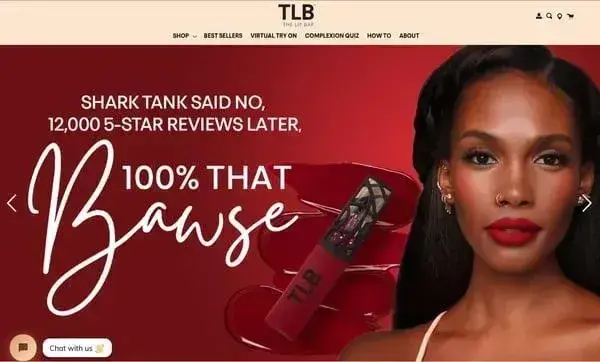
The campaign is built around a story of resilience and perseverance, focusing on the CEO's negative experience on the show Shark Tank.
Why This Campaign Works
It accomplishes multiple things through a single campaign: It gives the audience a peek into the brand's journey. It builds on that journey and beautifully connects it to a product.
Current customers share in this excitement because of the 10-year anniversary. Plus, new customers will be drawn in by the CEO's personal story.
2. Meta: “The Metaverse”
In 2021, Facebook announced the rebranding of its parent company. The new name, Meta, came with its own marketing campaign that introduced the world to a new concept called the “metaverse.”

The video posted to the Meta Facebook account showcases an alternate reality where people can interact in 3D.
Why This Campaign Works
The idea of a Facebook rebrand had been speculated before the launch of the campaign, which piqued the public‘s interest. That meant even if they didn’t like the change, they would still be interested in seeing what happens next.
3. Popeyes: “Megan Thee Stallion Hottie Sauce”
Popeye's already hit the ball out of the park with its chicken sandwich marketing campaign. Then, it nailed it again with the Megan Thee Stallion Hottie Sauce collaboration.
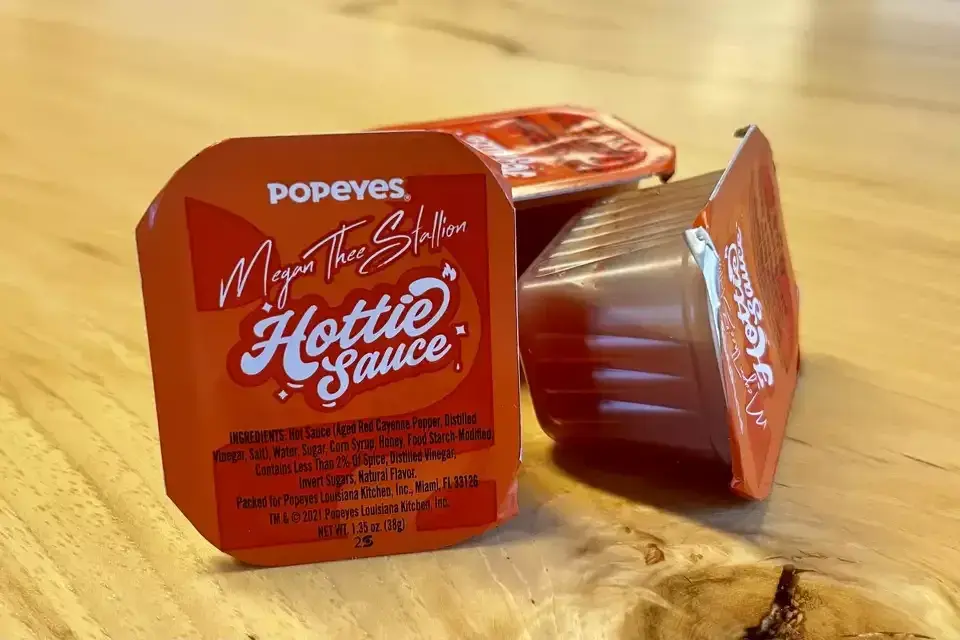
Arguably, Popeyes created one of the best chicken sandwiches on the fast-food market in 2019. At the same time, artist Megan Thee Stallion was becoming the hottest rapper in the industry.
So, it made sense that in 2021, the two would join forces to debut a remix of the successful chicken sandwich.
Why This Campaign Works
This campaign targeted the younger crowd with both just chicken sandwiches and merchandise.
Popeyes was able to tap into this segment of the market and increase sales while continuing to capitalize on its success. Plus, the campaign never came across as stale.
4. Cheerios: #GoodGoesRound
[Video: https://www.youtube.com/watch?v=_kSv3UgjPTs]
General Mills ran a non-profit campaign called Good Goes Round via its Cheerios brand. This effort lobbied to raise enough money to fund one million meals.
Why This Campaign Works
The campaign featured its own landing page, video marketing assets, and hashtag (#GoodGoesRound). This separated the campaign from its parent brand and made it more shareable.
The company also paid to promote the “Good Goes Round” URL on Google, giving the campaign more visibility.
5. Apple: “Shot on iPhone”
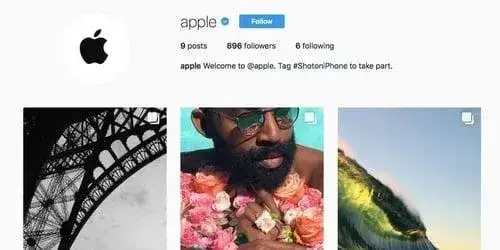
You've probably seen a billboard with an amazing image that declares, “Shot on iPhone.” This series highlights the high-quality images that customers can capture on the iPhone X.
It’s a product launch campaign that focused on one specific feature of the new Apple smartphone.
Why This Campaign Works
This campaign was unique. It’s similar to a user-generated campaign but was also promoted heavily by the brand itself.
Apple launched its own Instagram account to share the #ShotoniPhone content. The brand also collaborated with professional photographers and videographers. There were even official TV advertisements.
6. The General: “Rebrand”
When it comes to cheesy commercials, The General's old marketing strategy fits the bill.
The brand became synonymous with pixelated animations and low-quality production. This inevitably had a negative effect on the way potential customers perceived the quality of service.
In 2020, the company changed its marketing campaign to target a more rational customer who appreciates a little humor.
Shaquille O'Neal became the face of the brand. He appeared in commercials alongside other notable celebrities, like Montell Jordan and Ernie Johnson.
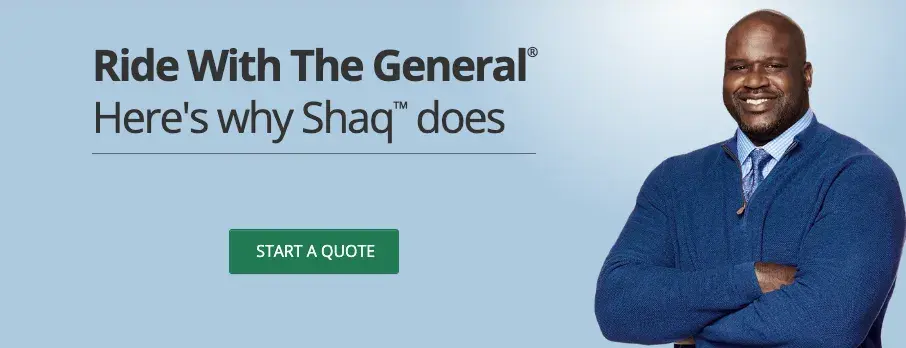
Why This Campaign Works
The General listened to its customers' opinions of the brand before moving forward with the new campaign and saw great success as a result.
The tone of the marketing campaign remained light-hearted but took a more mature approach to the humor. The key selling points of The General shine through.
7. Airbnb: “Made Possible by Hosts”
In the face of the COVID-19 pandemic, travel companies such as Airbnb saw unprecedented losses in profit.
How did the company respond? It created a series of videos called “Made Possible by Hosts.” These videos showed appreciation for the hosts who have continued to accept guests on the platform.
Why This Campaign Works
What I really love about the campaign is that it doesn’t put Airbnb customers at the center.
Instead, it spotlights the hosts who accept customers in the first place. In doing so, Airbnb focuses on the human aspect of its platform: You’re not renting an Airbnb property. You’re renting someone’s home.
8. Patagonia: “Earth is Our Only Shareholder”
In 2022, founder of Patagonia Yvon Choinard decided on “going purpose” over “going public” which involved donating 100% of profits after reinvesting in the business to two nonprofits committed to championing the environment.
Why This Campaign Works
While less of a traditional marketing campaign and more of a business decision, I love Patagonia’s approach to double down on its values and attract its core audience — people who love the outdoors and want to protect it. It’s a powerful branding strategy and has the potential to continue spinning up lots of great campaigns.
Over to You
Marketing campaigns aren’t easy, but they’re valuable and integral to growing a successful brand and business.
Campaigns set apart certain deliverables from general promotional efforts. You can reach your audience in creative and exciting ways.
If you’re not sure where to start, I recommend putting yourself in your audience’s shoes. Start with what would be valuable to your audience and go from there.
After all, your audience is critical to your success as a company, so you’ll never go wrong by putting them first.
Editor's note: This post was originally published in August 2017 and has been updated for comprehensiveness.
Marketing Campaigns




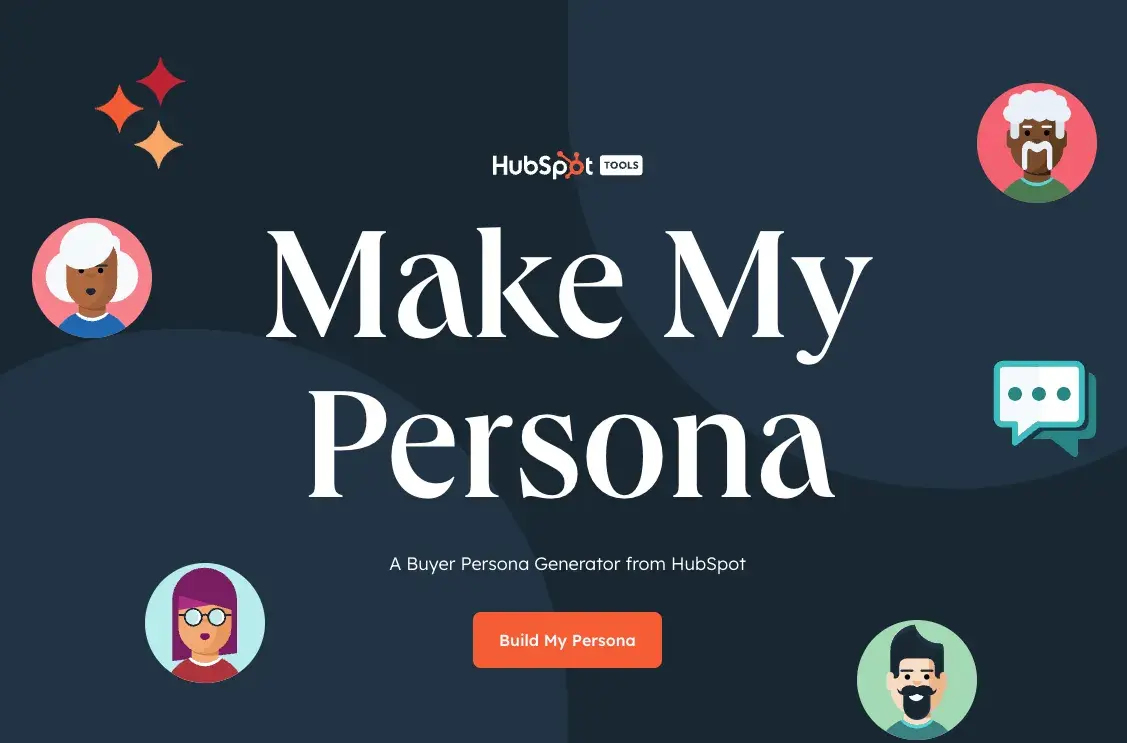


![How to run a marketing campaign on a tight budget [expert tips & free tools]](https://53.fs1.hubspotusercontent-na1.net/hubfs/53/19_What%20is%20a%20Marketing%20Plan%20%26%20How%20to%20Write%20One%20%5B+Examples%5D.png)
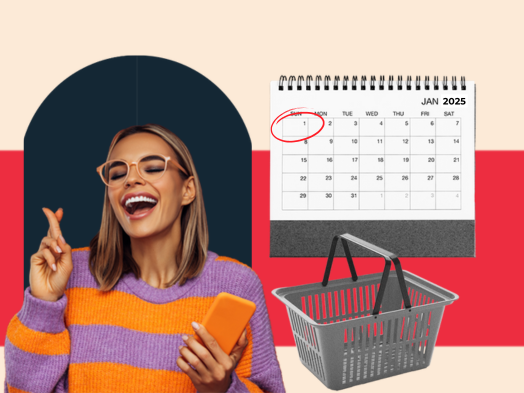
![I Took a Deep Dive Into PERT to Create More Accurate Time Estimates [+ Templates, Examples, and Formula]](https://53.fs1.hubspotusercontent-na1.net/hubfs/53/pert-1-20250213-8082845.webp)
![4 Clever Olympics Marketing Campaigns [+Top Takeaways]](https://53.fs1.hubspotusercontent-na1.net/hubfs/53/best-olympic-marketing-campaigns-1-20240809-9542066.webp)
